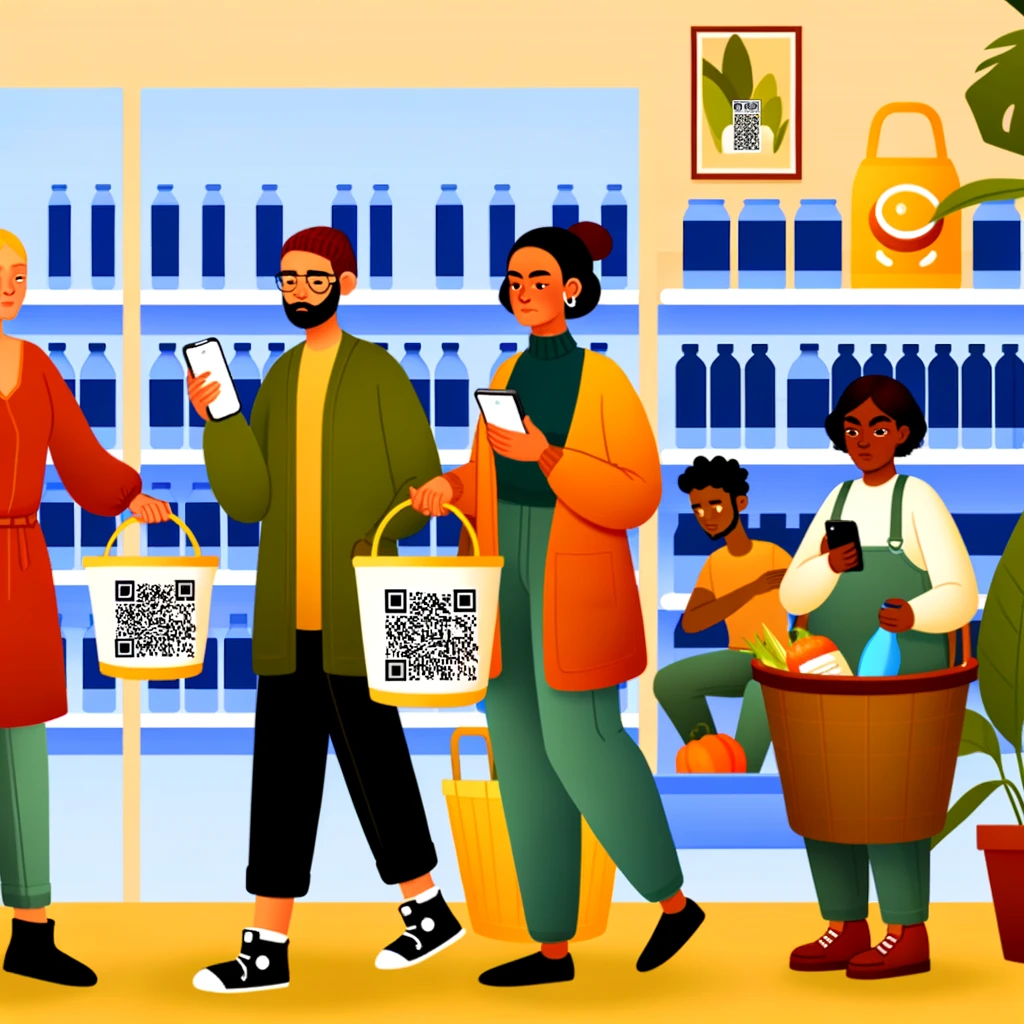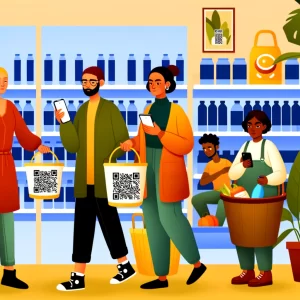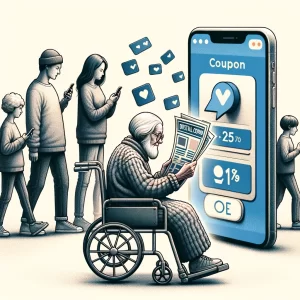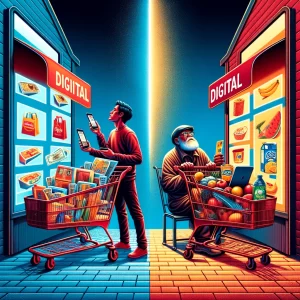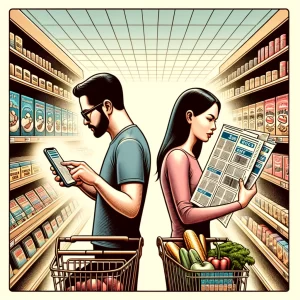In the glowing screens of our modern marketplace, digital coupons have emerged as the new currency of savvy shopping. Yet, as we navigate through online deals and QR code discounts, a significant segment of our community finds itself adrift in this digital sea. The shift towards digital coupons, while heralding an era of convenience for many, simultaneously erects barriers for others. This digital divide not only questions the accessibility of such savings but also the inclusivity of our technological advancements. As we delve into the nuances of digital couponing, we confront the imperative to bridge this divide, ensuring that the benefits of technology extend to all corners of our shopping society.
The Digital Shift: Convenience vs. Inclusivity
The allure of digital coupons lies in their convenience. They offer instant savings with a simple tap or scan. Yet, this convenience presupposes access to the necessary technology and the proficiency to use it. This shift to digital has inadvertently marginalized those without smartphones, or reliable internet. It also marginalizes those without digital literacy—often the elderly, low-income families, and rural inhabitants. The question then arises: How can we reconcile the efficiency of digital advancements with the imperative of inclusivity? The balance between convenience and accessibility remains precarious. This challenges us to envision a couponing future that embraces all shoppers.
The Forgotten Shoppers: Impact on Vulnerable Groups
Digital coupons, for all their efficiency, cast a shadow over segments of our population already grappling with the digital divide. Elderly shoppers, who may find technology daunting, and low-income families, who might lack access to the necessary devices, find themselves excluded from a world of savings. This exclusion not only reinforces existing inequalities but also deprives these groups of the opportunity to participate fully in the economy. As we champion digital innovation, we must also address the needs of these forgotten shoppers, ensuring that our digital future does not leave them behind.
Privacy Concerns: The Hidden Cost of Savings
In the digital realm, coupons come at a price not always measured in dollars: privacy. The data collected with each scan or click reveals shopping habits, personal preferences, and even financial information, raising significant privacy concerns. Shoppers are increasingly wary of how their data is used and shared. This makes some hesitant to embrace digital coupons. The challenge lies in crafting a system that respects user privacy while still offering the benefits of digital savings. It’s a delicate balance that requires transparency and trust.
Technological Barriers: The Accessibility Issue
At the heart of the digital coupon divide are the technological barriers that hinder accessibility. From the complexity of navigating digital platforms to the lack of internet access in rural areas, these barriers prevent a significant portion of the population from accessing digital coupons. Addressing these issues requires innovative solutions. Solutions that extend beyond mere access to technology. It involves designing user-friendly platforms, offering alternative access methods, and ensuring that the digital world is welcoming to all.
Economic Divide: Exacerbating Inequality
The transition to digital coupons risks exacerbating the economic divide, as those already at a disadvantage find themselves further marginalized. The inability to access digital deals can lead to a two-tiered shopping experience. An experience where the digitally connected enjoy savings and benefits out of reach for others. This divide not only affects individual shoppers but can also have broader societal implications, deepening economic disparities. Bridging this gap requires concerted efforts to make technology more accessible and affordable, ensuring that savings are a right, not a privilege.
A Call for Hybrid Solutions: Bridging the Gap
The solution to the digital coupon divide may lie in a hybrid approach that marries the convenience of digital with the accessibility of traditional methods. Offering both digital and paper coupons, for instance, ensures that everyone, regardless of technological capability or access, can enjoy the benefits of savings. Retailers and technology providers must collaborate to create inclusive systems that cater to a diverse shopper base. By fostering an environment where digital and traditional methods coexist, we can move towards a more inclusive future of couponing.
Embracing an Inclusive Future of Savings
As we stand at the intersection of technology and commerce, the digital coupon divide challenges us to rethink the role of digital innovation in our society. It compels us to consider not just the efficiency and convenience it brings but also the imperative of inclusivity. By confronting the barriers that prevent full participation in the digital savings revolution, we can pave the way for a future where technology serves as a bridge, not a barrier. It’s a future where digital deals illuminate every shopper’s path, ensuring that the treasures of technology are within reach for all. Let’s commit to a journey of inclusivity, where the benefits of our digital age are shared widely and equitably, heralding a new era of savings for everyone.
Read More
Is Digital Coupon Better Than Paper Coupon?
10 Things Only People Who’ve Been Broke Will Understand About Grocery Shopping


